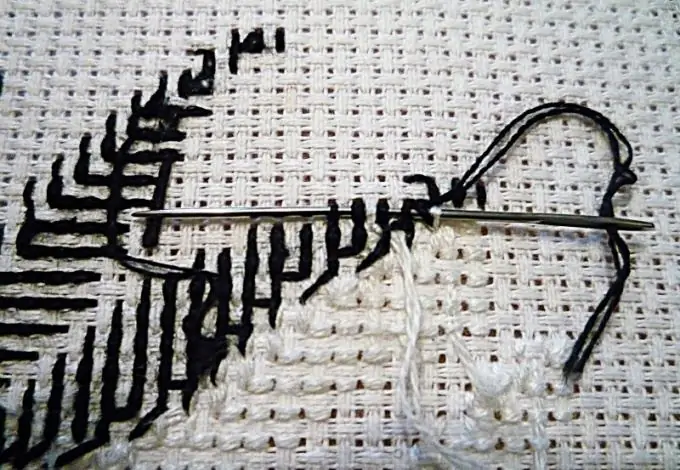There should be no knots on a high-quality embroidery, with the exception of knotted sewing technique. There are several ways to secure a new thread.

Securing the threads
Starting a new thread, it is passed under the stitches of the one already embroidered to a length of at least 1.5-2 cm. If the embroidery has just begun, you can make several stitches where they will later be covered with a pattern. At the end of the embroidery, the thread can be fastened under the already embroidered sections, both from the face and from the inside. Best of all, if the thread is hidden under the embroidery of the same or similar color, so the setting will be less noticeable. It is unacceptable, even from the inside out, to hide black, dark threads under white, light ones. Such a setting will inevitably show through and ruin the whole look. Dark threads often fade a little during washing and ironing, and, fixing the thread in this way, you can spoil the embroidery with spots.
Professional work, embroidered by an experienced craftsman, is neat not only from the face, but also from the inside out. The perfect wrong side is a special embroidery technique that is not easy for beginners to master. The absence of knots helps to avoid the appearance of tubercles on the surface of the fabric and touching the knots of the thread during the embroidery process. The fabric, if there are knots on it, is deformed, and in case of an error, it is much more difficult to dissolve the embroidered one together with the knots. In some cases, the sloppy seamy side of the embroidery is not visible and does not matter, but the use of knots to fasten the threads in this case is also unacceptable. Over time, they can bloom and come out along with the end of the thread to the front side, even in paintings. If we are talking about a thing that is used on a daily basis, such a situation is almost inevitable.
Tangled threads
A knot tied on a working thread is either tried to untangle with a needle, or the thread is cut, fastened and started to sew with a new one. To prevent or minimize the appearance of nodules, there are several methods.
In order not to bartack, many people prefer to bend an even number of threads in half and fasten behind the resulting loop. This method is really very convenient, and you can use it when embroidering with cotton thread or wool. For silk, this method is completely unsuitable, since in this case the two parts of the thread have a different twist direction, and this contributes to the formation of knots and twisting of the thread. To avoid this, the required number of threads is cut from the skein and placed in one direction, threading into the needle.
Long threads, more than 30-40 cm, are also more prone to tangling than short ones. When embroidering, it is useful to release the thread with the needle down several times and let it unwind in this way, to take a natural position. The thread is released to unwind after being used every 10-15 cm of its length.






